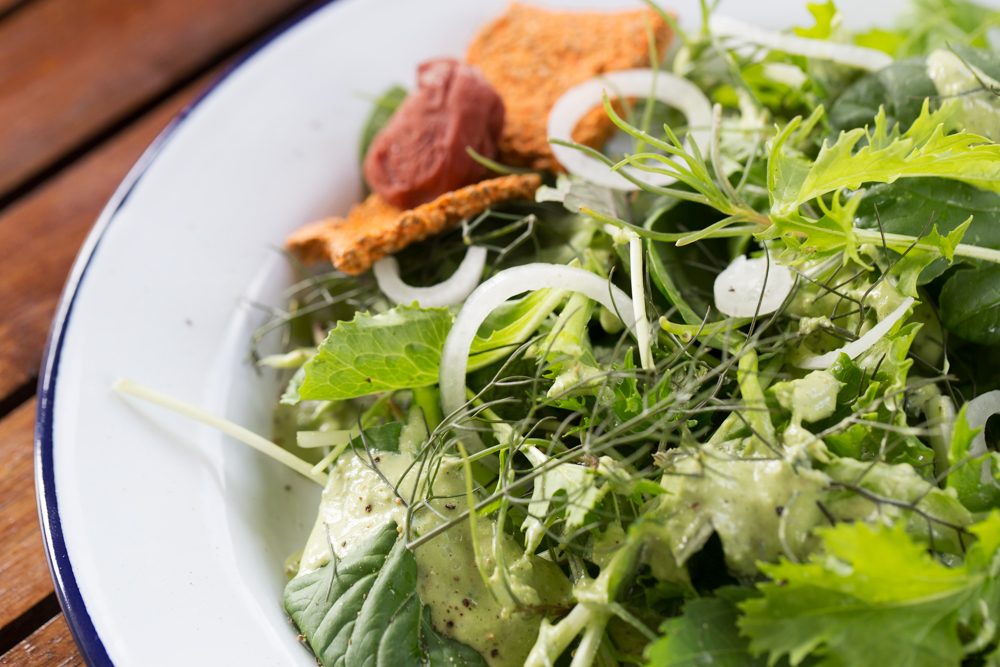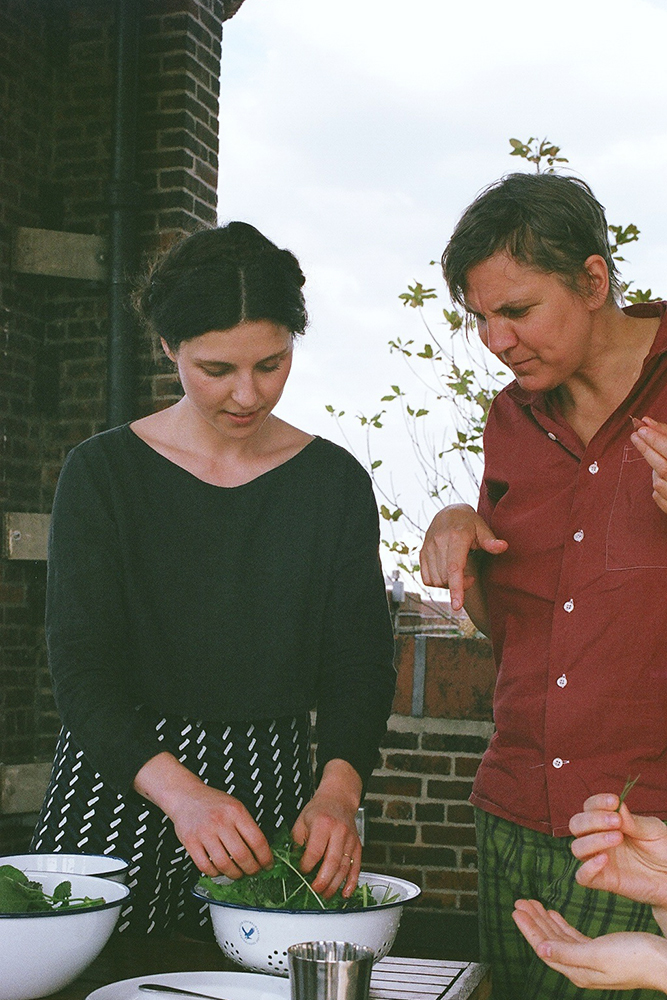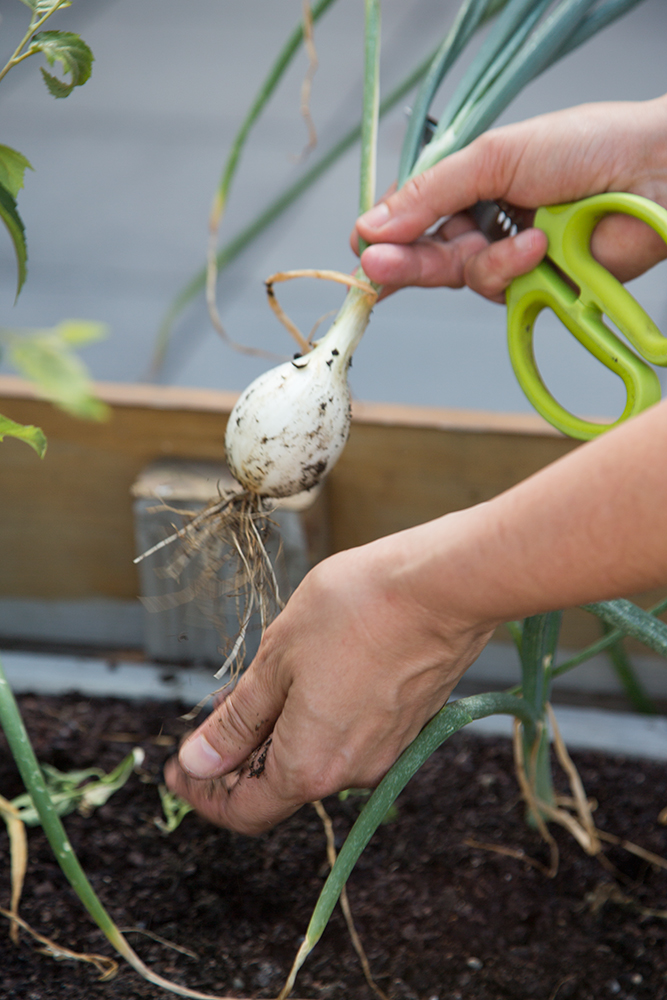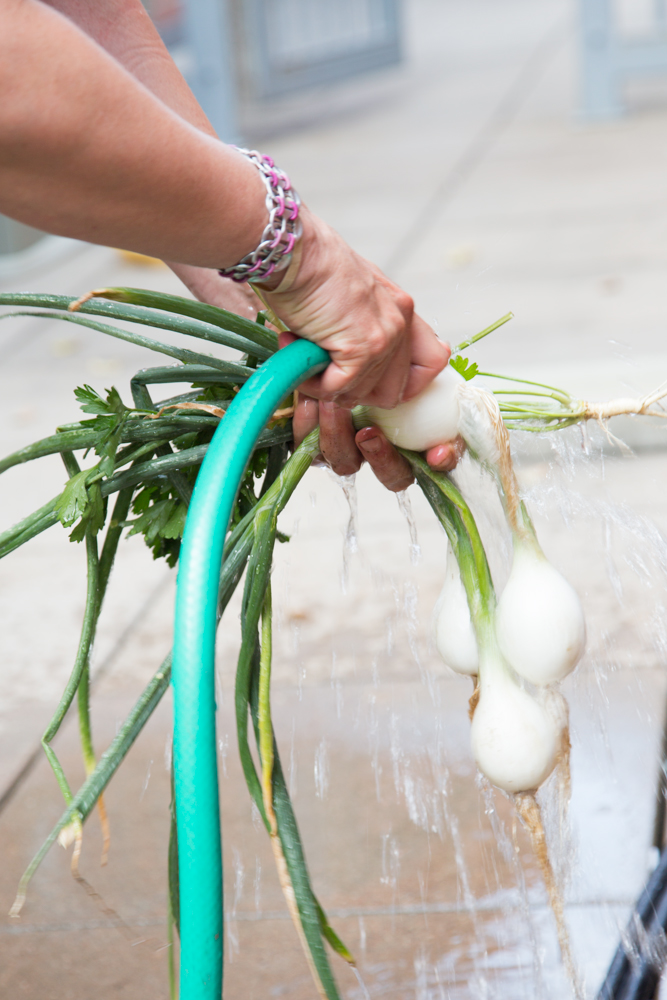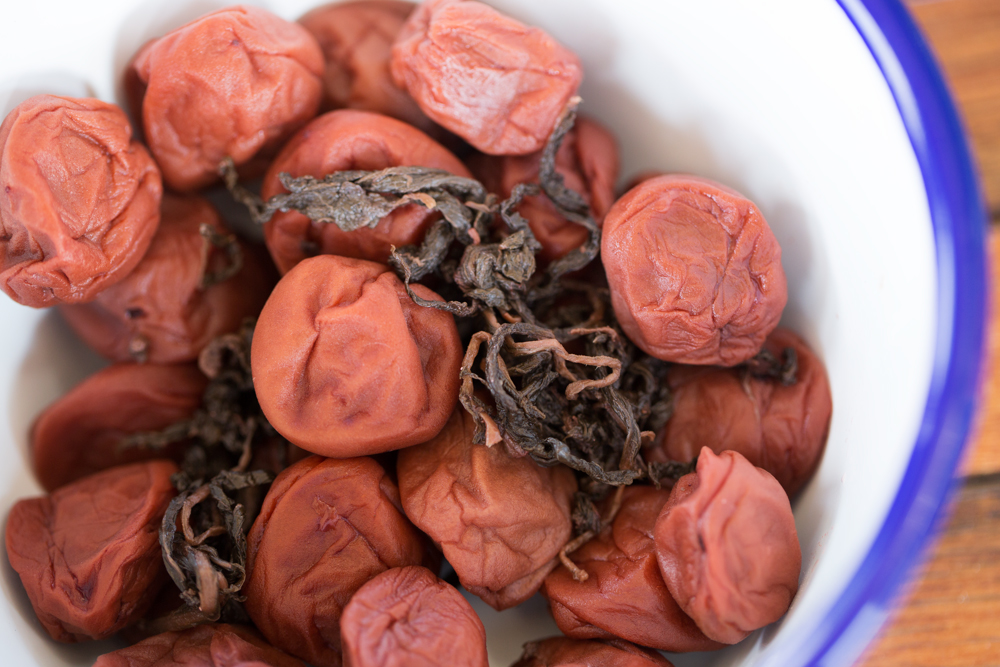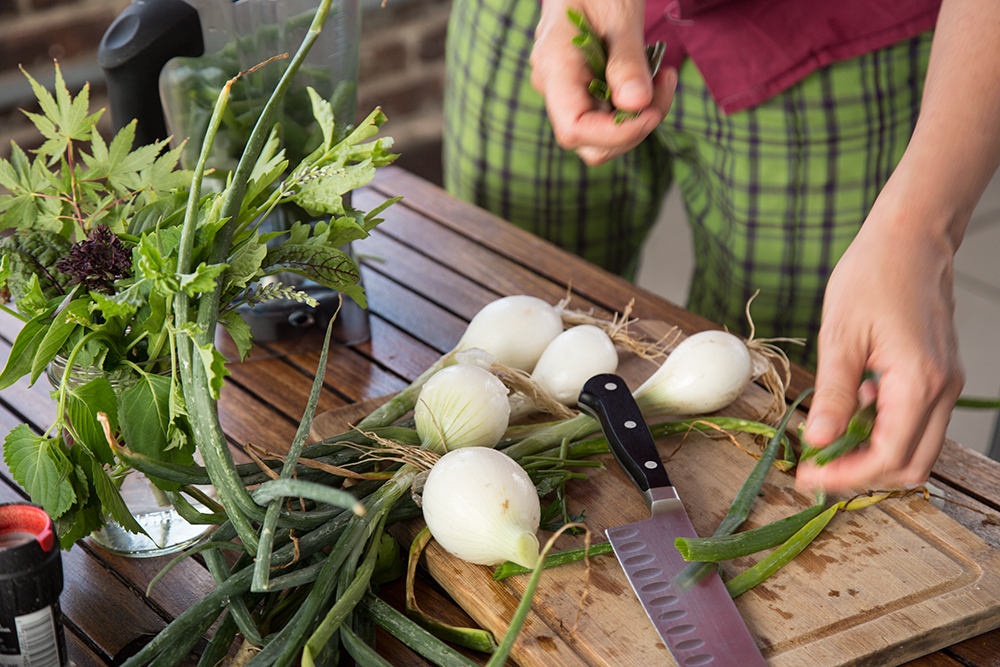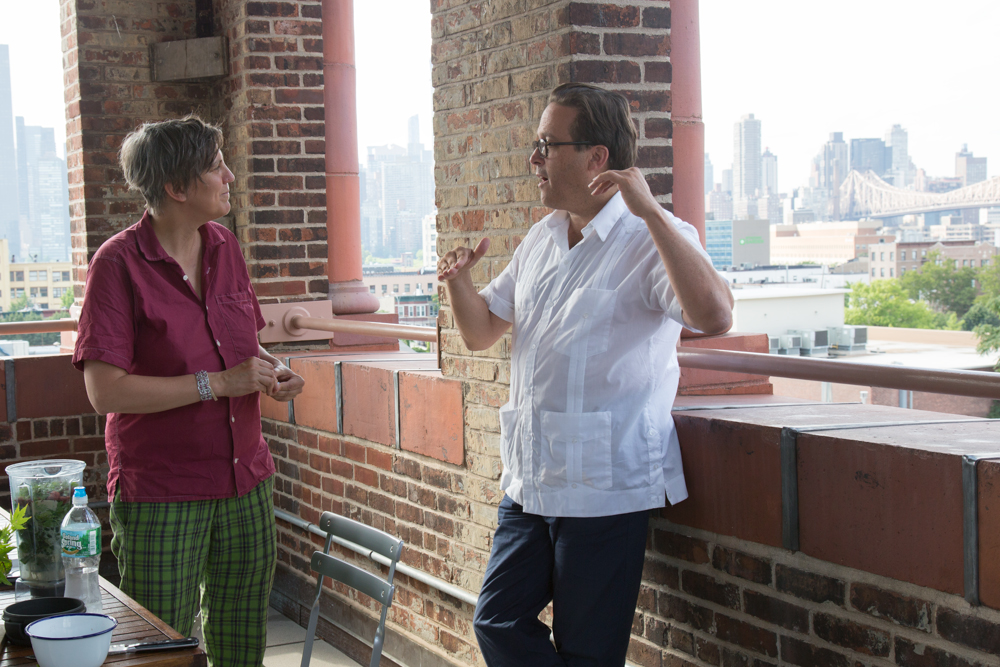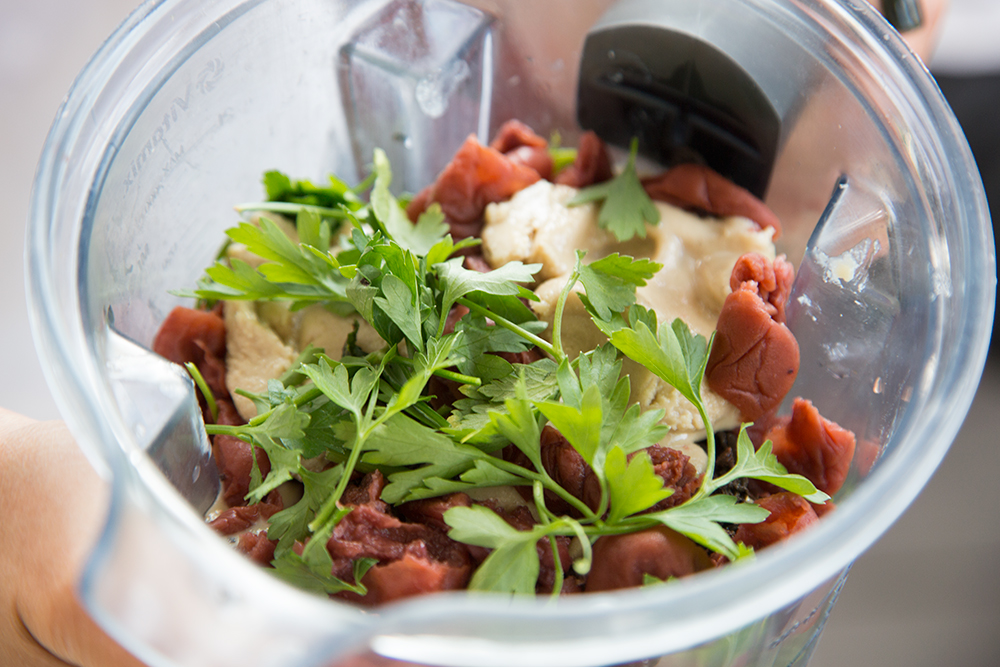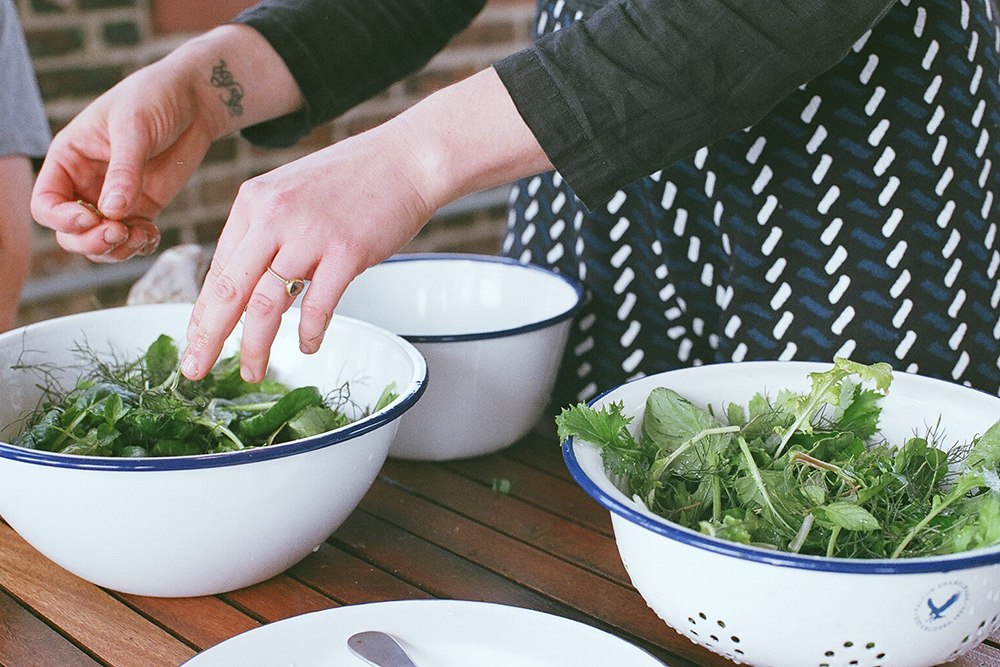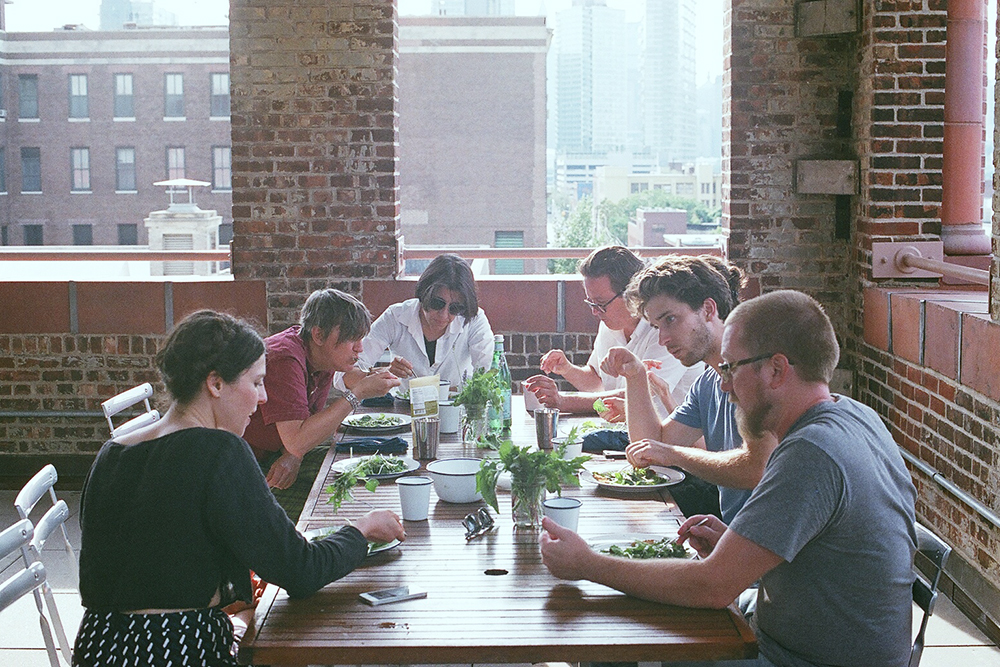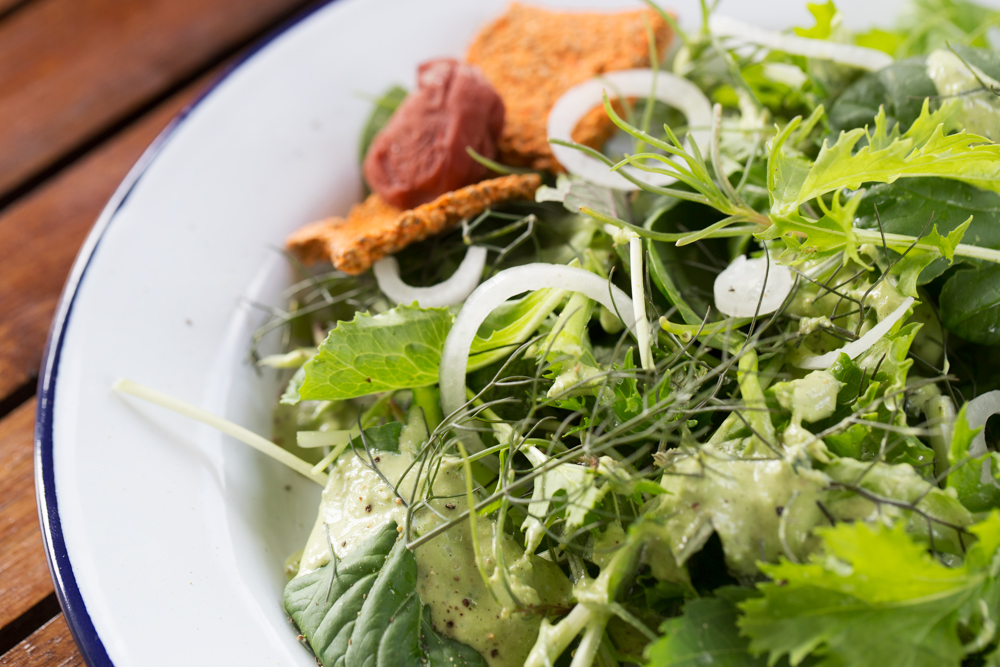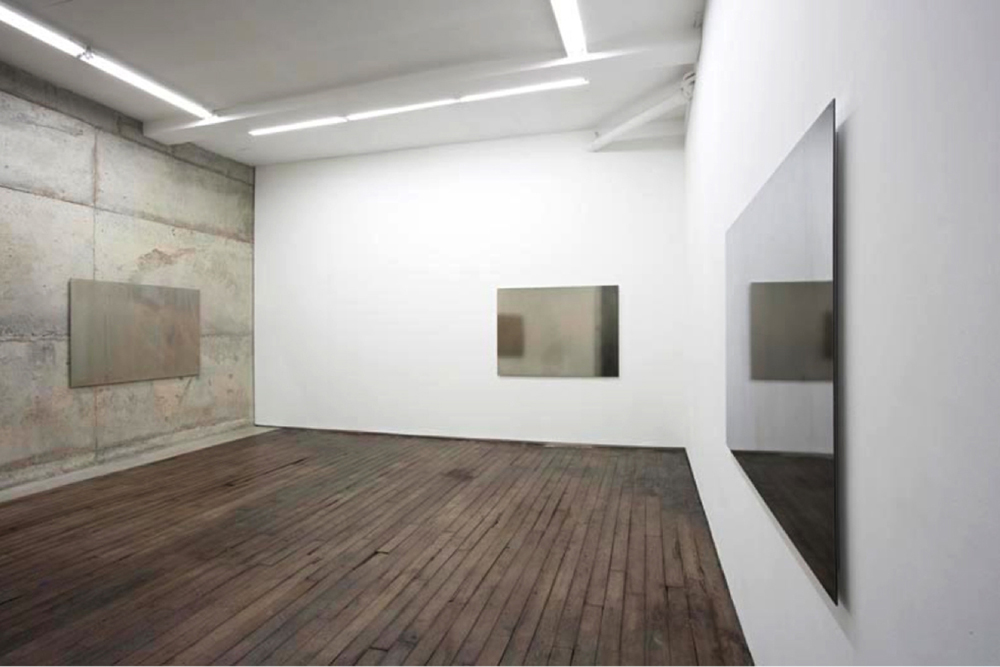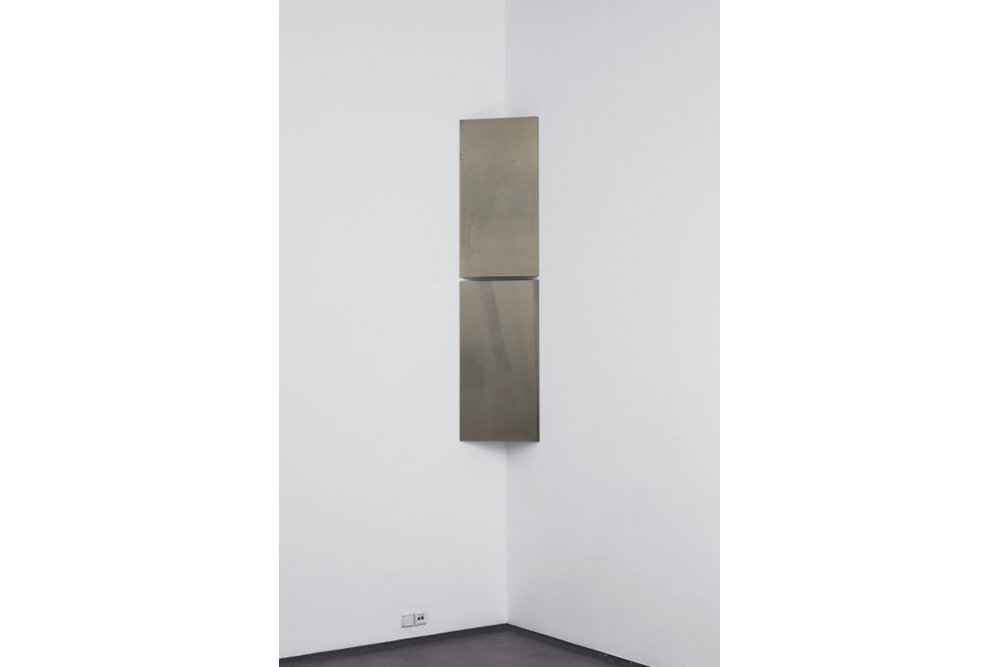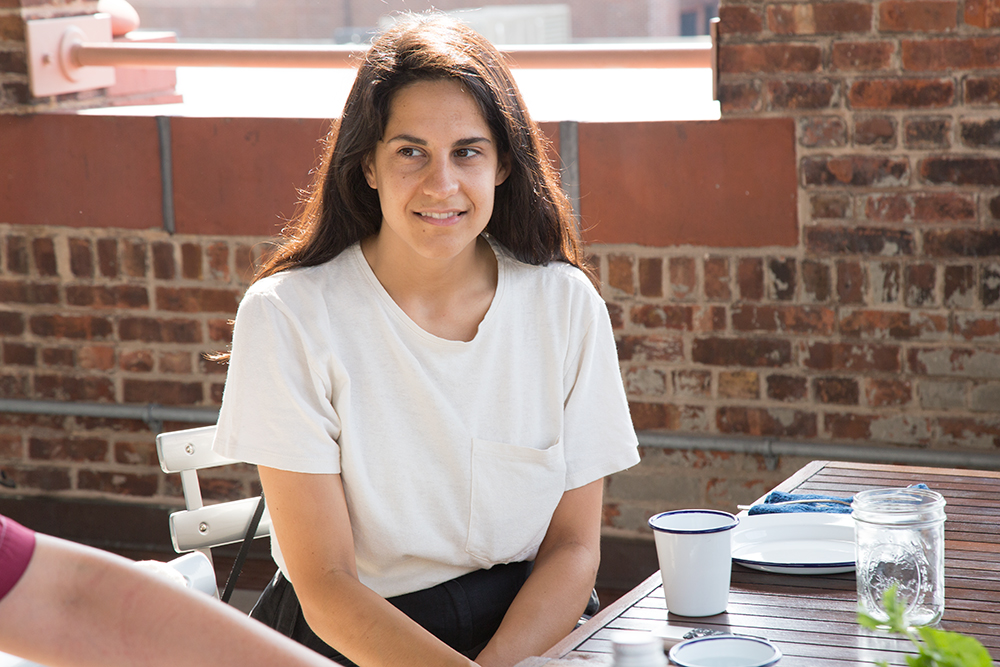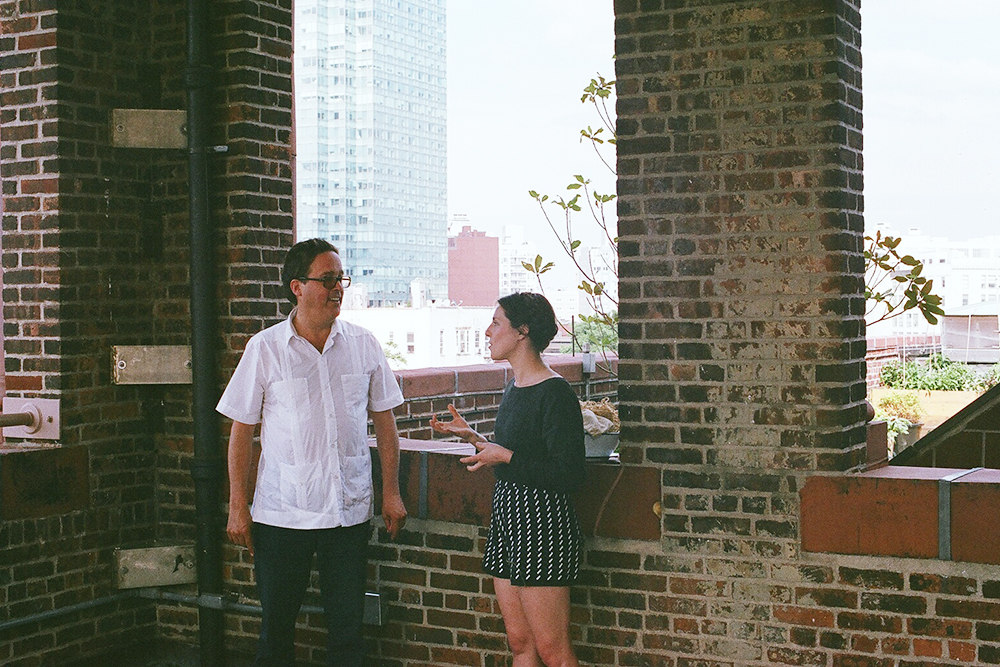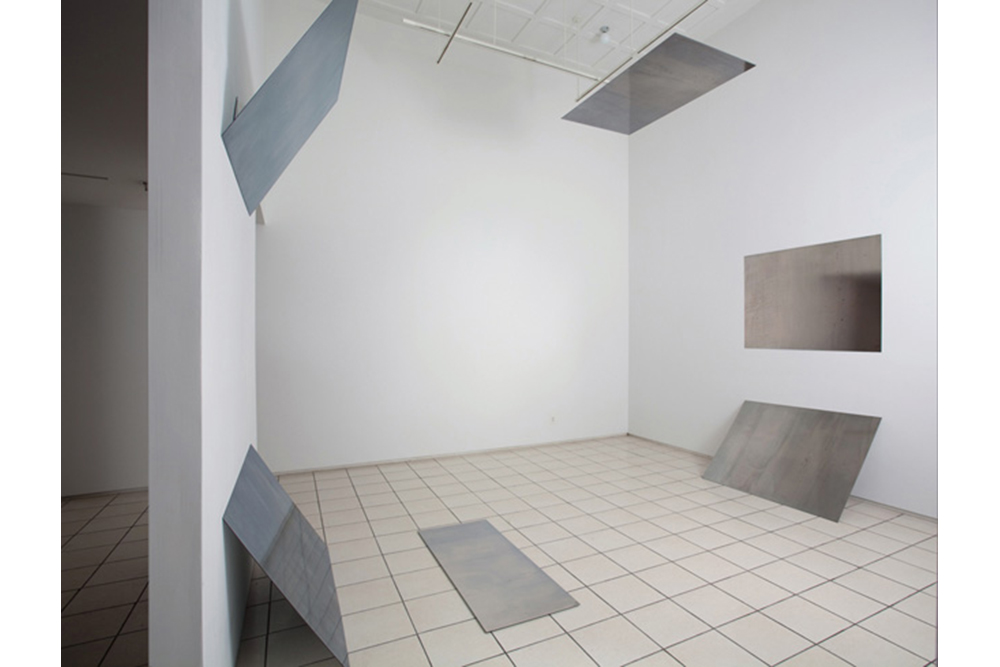NOTES
Ume plums, originally from Japan, are more similar to apricots than to plums. They are inedible in their raw state, but are served pickled, infused in alcohol, or made into wine.
In their pickled form, Ume plums are often called Umeboshi, and are a bit tart and salty. The plums are said to have a great variety of medicinal properties including stimulating digestion and eliminating toxins in the body.
Ume plums are easy to find in larger grocery stores or in Asian markets.
Serve this dressing on a broad-leafed lettuce to best highlight the dressing.
RECIPE
DIFFICULTY
EASY
SERVES
6
PREP TIME
15 MINS
Dressing
-
10pittedume plums
-
1cuptahini
-
1bunchparsley
-
2bunchesscallions
-
1/2cupwater
POSTED UNDER
- Japanese,
- MOMA PS1,
- Salad Garden
Artist Liz Deschenes could be best described by her approach to making salad with me at the MoMA PS1 Salad Garden. First, she suggested we collaborate — she would make the dressing and I would choose the greens to use from the garden. Then, she asked if she could extend the invitation for rooftop salad to her entire gallery staff at Miguel Abreu, including Miguel himself. Before I could even complete my own gesture towards her, Liz had paid it forward.
Even Liz’s art, which might at first glance appear cool in its minimalist aesthetic, hinges on engagement and the inclusion of her viewer, who is often times, literally reflected in the work. What appears to be a slick piece of mirror or metal, is actually a very carefully made, reflective photographic print, exposed by the light of the moon. Her work is smart without possessing an ounce of pretension. The staff at her gallery describe her as the warmest and most appreciative artist that they work with, and not only because she shares salad with them, but because she just cannot stop saying “thank you.”
The grainier images in this post were actually shot on film by Leah Pires, which was a god-send as I was too wrapped up in creating an impromptu salad party to take enough photos! Thanks Leah.
Liz Deschenes In her own words
Julia: Your work has become dependent on the weather and the sun, two things that you absolutely cannot control. But, you create these very minimal, deliberate installations from that work. Is this push-pull coincidental, or is that something you are interested in? I ask because I often find myself working out certain personality traits in my work – for example, I think I invite other people into my process as a way to combat my own controlling and obsessive nature.
Liz: I like the idea of not knowing what the conditions and variables will be, and learning how to respond to them all – sun, wind, humidity, ambient light from buildings all have a cumulative affect on the work, and none of them are repeatable or as you write, “negotiable.”
Julia: You worked at the Isabella Stuart Gardner Museum after college, can you tell me about that experience? How did you get the job, did you have prior cooking experience?
Liz: I had worked at Mutt and Geoff’s sandwich shop while a student at RISD. I found the job listing for the Gardner in the Boston Globe a few days after I graduated from school. I began as a prep cook, and while I was there everyone either left or got fired, so I went on to help run the kitchen with another recent art school grad from Mass Art, neither of us possessing any formal training. But we found a cookbook by Lois McKitchen Conroy, another Mass Art Alumna. It was in there where I found the soups, quiches, tarts and salads that were the mainstay of the cafe.
Julia: I asked you to make a salad, and you responded by bringing an (awesome) dressing recipe, and asking me to collaborate by determining what greens we would use. Why?
Liz: I would say making a dressing and having you find the greens is about conditions again and having extreme respect for what you have accomplished. Who better to choose the greens, succulent herbs and table setting than you who has dedicated such energy to the wonder of MoMA PS 1’s roof.
Julia: You invited your entire gallery to share our salad. This was a first for my project. You referred to them as your, “family.” Is this an unusual attitude for an artist to have towards their dealer and the artists/art workers who run a commercial art space?
Liz: Everything that I do is collaboration – everyone at the galleries are my counterpart and I feel indebted to their expertise, dedication, care and friendship.
